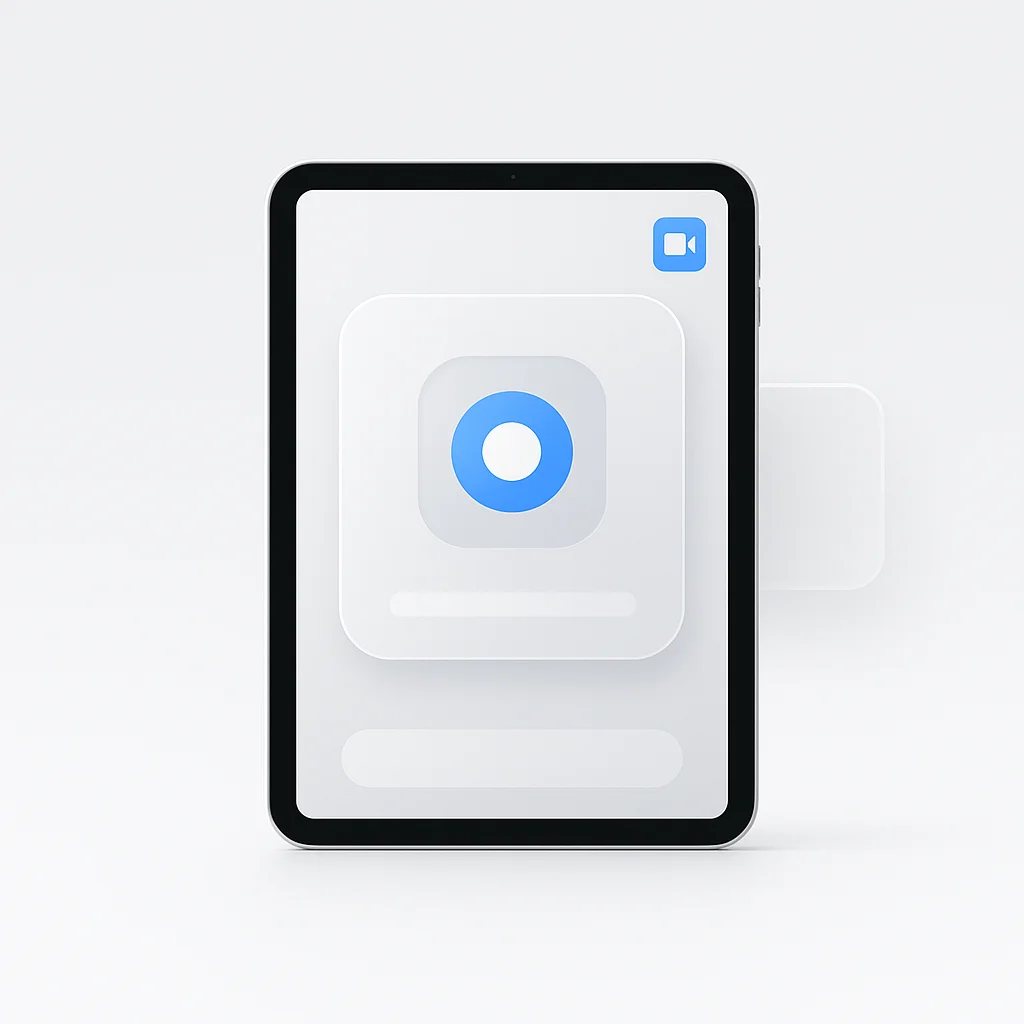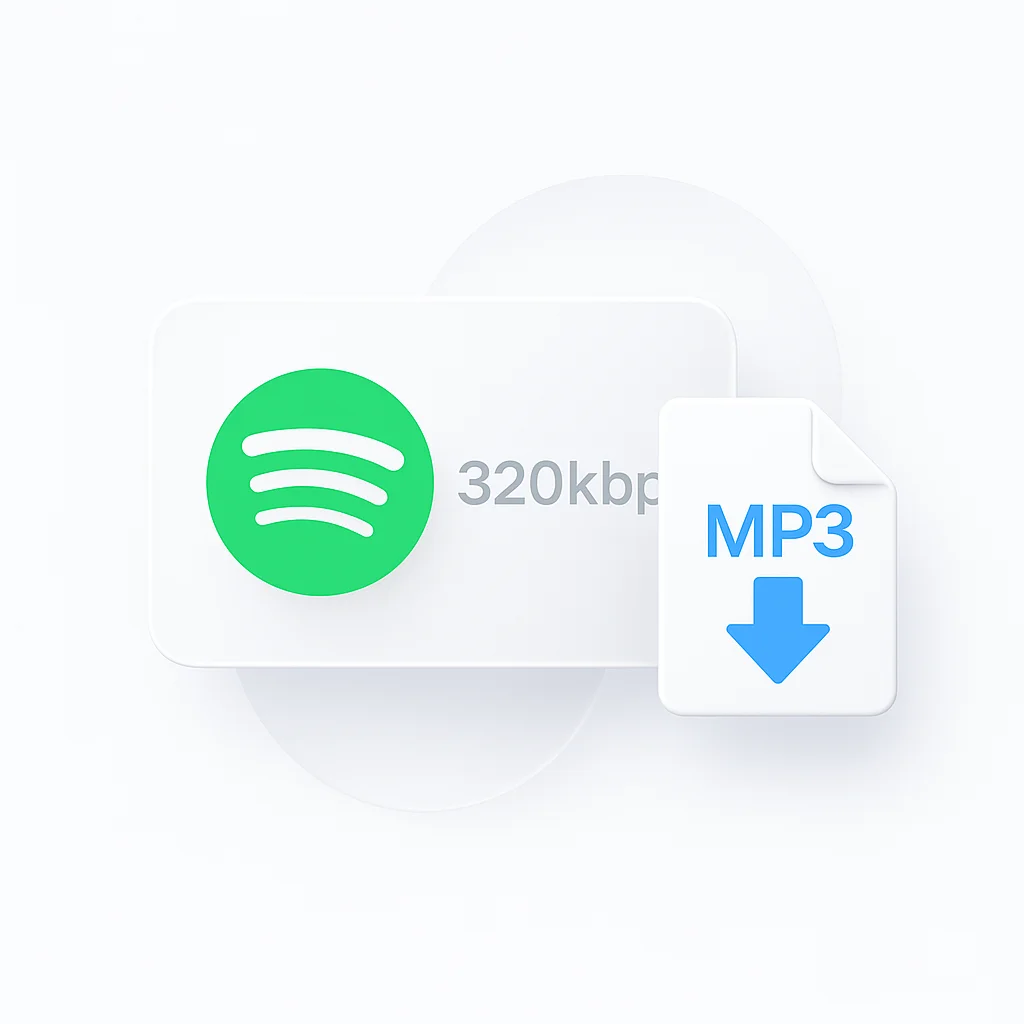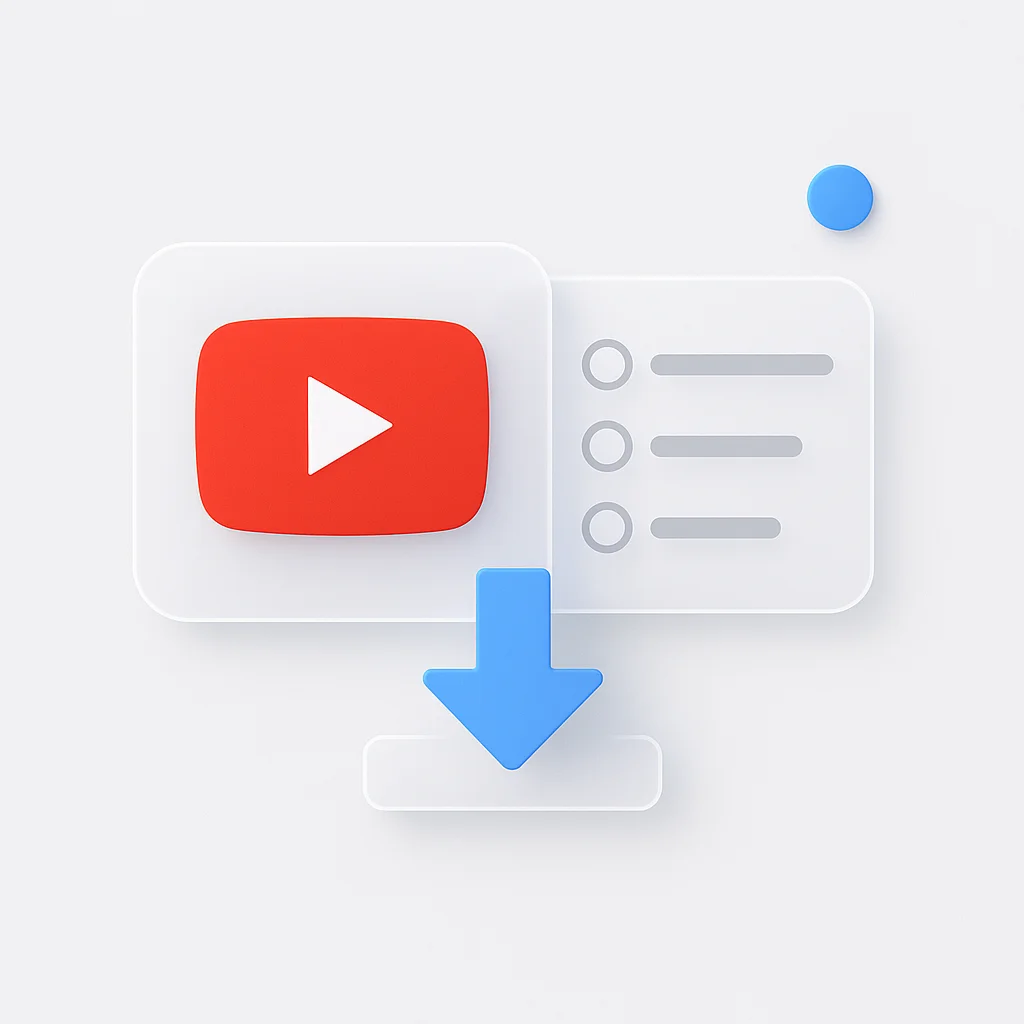教育または学習体験を次のレベルに引き上げる準備はできていますか?もう探す必要はありません!この詳細なチュートリアルでは、iPadでの画面録画の秘訣を明らかにし、教師と生徒の両方に、知識を共有し、聴衆と関わる方法に革命をもたらす強力なツールを提供します。従来の方法に別れを告げ、簡単かつ自信を持って教育の未来を受け入れましょう。さあ、飛び込んで、待ち受けている無限の可能性を解き放ちましょう!
はじめに
デジタル革命の勢いに乗って、デバイスのアクティビティをキャプチャして共有する能力は、ますます価値のあるスキルになっています。ここで画面録画の魔法が登場します。画面録画とは、その名のとおり、デバイスの画面で発生していることをリアルタイムでキャプチャするプロセスです。あなたがチュートリアルビデオを作成する教育者であろうと、ハイスコアを共有するゲーマーであろうと、新しいアプリの機能をプレゼンテーションする専門家であろうと、画面録画は今日の技術主導の世界で不可欠なツールです。
特にiPadユーザーにとって、画面録画機能を理解して利用することで、可能性の世界が開かれます。iPadは、その直感的なインターフェースと強力な機能により、シームレスな画面録画体験を提供します。ただし、この機能を最大限に活用するには、その動作方法と、特定のニーズにどのように役立つかを理解することが不可欠です。このガイドでは、iPadで画面を録画する方法を包括的に説明し、この強力なツールをすぐに利用できるようにします。iPadの世界に不慣れな方も、スキルを向上させようとしている経験豊富なユーザーも、iPadでの画面録画の詳細を掘り下げていきましょう。
画面録画とは
画面録画とは、その名のとおり、デバイスの画面上で行われているすべてのアクションをリアルタイムでキャプチャできるデジタルプロセスです。デバイスで行ったことを正確に再生するビデオクリップと考えてください。すべてのスワイプ、クリック、またはキーストロークが記録されます。この機能はビデオをキャプチャするだけではありません。デバイスの内蔵マイクまたはシステムオーディオを介して、オーディオも録音できます。その結果生成されるのは、必要に応じて保存、編集、共有できるビデオファイルです。
iPadユーザーにとって、画面録画はさまざまな方法で非常に役立つツールになります。例えば:
- 教育コンテンツ: 教師は、生徒向けの学習教材またはステップバイステップのガイドを作成し、学習をよりインタラクティブでアクセスしやすいものにすることができます。
- アプリのデモンストレーション: 開発者は、アプリの機能を実証するために、マーケティングまたはチュートリアル目的でアプリの動作を記録できます。
- ゲーム: ゲーマーは、自分のゲームプレイを記録して、友人やソーシャルメディアプラットフォームで共有し、スキルを強調したり、攻略法を共有したりできます。
- プロフェッショナルプレゼンテーション: 企業セクターの個人は、プレゼンテーションや会議を記録して後で参照したり、リアルタイムで参加できなかったチームメンバーと共有したりできます。
- テクニカルサポート: デバイスで問題が発生している場合、画面録画はテクニカルサポートが問題をよりよく理解し、より正確な解決策を提供するのに役立ちます。
一言で言えば、iPadでの画面録画の実用的なアプリケーションは多数あります。iPadのコンテンツ消費デバイスとしての能力を、コンテンツの作成と共有を支援するデバイスへと拡張します。
iPadを画面録画用に準備する
iPadで画面録画を開始する前に、デバイスがタスクの準備ができていることを確認することが重要です。これには、デバイスの互換性の確認、十分なストレージ容量の確保、最適な録画に必要な設定の調整が含まれます。
iPadのモデルとOSバージョンの互換性を確認する
画面録画は、iOS 11以降のバージョンを実行しているiPadモデルで利用できます。iPadのiOSバージョンを確認するには、「設定」に移動し、「一般」をタップして、次に「情報」をタップします。ここにバージョン番号があります。お使いのデバイスが古いバージョンで実行されている場合は、画面録画機能にアクセスするためにiPadのオペレーティングシステムを更新することを検討してください。
録画に十分なストレージ容量を確保する
画面録画、特に長時間の録画は、デバイス上でかなりのスペースを占有する可能性があります。したがって、十分なストレージ容量が利用可能であることを確認することが重要です。「設定」>「一般」>「iPadストレージ」に移動して、iPadのストレージを確認できます。スペースが限られている場合は、不要なファイルを削除するか、一部のデータをiCloudまたは外部ストレージデバイスに移動して、スペースを解放することを検討してください。
最適な録画のために設定を調整する
画面録画の品質は、特定のデバイス設定によっても影響を受ける可能性があります。
- 明るさ: 鮮明な録画のために画面の明るさを調整します。画面が暗すぎたり明るすぎたりすると、最良の結果が得られない場合があります。
- 音量: サウンドで録音する場合は、デバイスの音量が最適なレベルに設定されていることを確認してください。
- おやすみモード: 「おやすみモード」を有効にすると、録画中の通話や通知などの割り込みを防ぐことができます。
- 画面の向きロック: 録画の性質に応じて、画面の向きを縦向きまたは横向きにロックすることができます。
これらの予備的な手順に従うことで、iPadでスムーズで高品質な画面録画を行うための理想的な条件を作成できます。
iPadで画面録画を有効にする方法
画面の録画を開始する前に、画面録画機能をiPadのコントロールセンターに追加する必要があります。方法は次のとおりです。
- iPadで「設定」を開きます。
- 下にスクロールして「コントロールセンター」をタップします。
- iPadがiOS 12以降を実行している場合は、「コントロールをカスタマイズ」をタップします。以前のバージョンの場合は、「含める」までスクロールダウンして、次の手順をスキップします。
- 「コントロールを追加」で「画面録画」を見つけ、その横にある緑色の「+」ボタンをタップします。これにより、「画面録画」が「含めるコントロール」リストに移動します。
これらの手順により、画面録画ボタンがコントロールセンターに表示されるようになりました。これは、画面の右上隅から下にスワイプ(Face ID搭載のiPadの場合)するか、画面の下部から上にスワイプ(ホームボタン搭載のiPadの場合)してアクセスできます。
クイックアクセスのヒント:
- トリプルクリックショートカット: 電源ボタンをトリプルクリックして画面録画を開始するように、アクセシビリティショートカットを設定できます。「設定」>「アクセシビリティ」>「アクセシビリティショートカット」に移動し、「画面録画を開始」を選択します。
- 音声コントロール: iPadで音声コントロールを設定している場合は、「コントロールセンターを開く」と言ってから「画面録画をタップ」と言って、画面録画を開始できます。
サウンドなしでiPadで画面を録画する方法
コントロールセンターで画面録画を有効にすると、サウンドなしでiPadの画面を録画するのは簡単です。
- コントロールセンターを開きます。
- 画面録画用の円形のボタンが表示されます。それをタップするだけで、カウントダウンが開始されます。3秒後、iPadは画面の録画を開始します。
- 録画を停止するには、もう一度コントロールセンターを開き、同じボタンをタップします。これは赤色になっているはずです。または、画面上部の赤いステータスバーをタップして「停止」を選択することもできます。
この方法では、内部または外部のオーディオなしで、ビデオのみがキャプチャされることを忘れないでください。
サウンドなしで録画する実用的な用途:
サウンドなしで録画することは、いくつかの状況で役立ちます。たとえば、次の場合:
- オーディオがキャプチャしているコンテンツに関係がない場合。
- 編集中に後でボイスオーバーまたはBGMを追加する予定の場合。
- うるさい環境で録画していて、サウンドが邪魔になる可能性がある場合。
これらの手順により、iPadでの画面録画を習得し、特定のニーズに合わせてプロセスを調整することができます。
サウンド付きでiPadで画面を録画する方法
サイレント画面録画にはその場所がありますが、視覚とオーディオの両方のコンポーネントを録画したい場合もあります。サウンド付きで画面を録画するには、次の手順に従います。
- コントロールセンターを開きます。
- 円形の画面録画ボタンを長押しするか、しっかりと押します。これにより、メニューが開きます。
- 「マイク」ボタンをタップしてオンにします。有効にすると赤色に変わります。
- 「録画を開始」をタップします。カウントダウンが始まり、3秒後、iPadはオーディオ付きで録画を開始します。
- 録画を停止するには、コントロールセンターを開き、赤い画面録画ボタンをタップします。または、画面上部の赤いステータスバーをタップして「停止」を選択します。
サウンド付きで録画する時期と理由:
画面録画にオーディオを含めることは、いくつかのシナリオで有益です。
- プロセスのナレーション: チュートリアルやデモンストレーションを作成している場合、手順をナレーションすることで、視聴者がプロセスをより簡単に理解できるようになります。
- アプリ内サウンドのキャプチャ: ゲームプレイやマルチメディアアプリを録画している場合、アプリ内サウンドを含めることで、より没入型の視聴体験を作成できます。
- ビデオ通話の録画: 仮想会議や通話の記録を保持するには、サウンドをキャプチャすることが不可欠です。
iPadで画面録画を保存およびアクセスする方法
画面録画が終了したら、それがどこに保存され、どのようにアクセスできるか疑問に思うかもしれません。知っておくべきことは次のとおりです。
iPadが画面録画を保存する方法
画面録画を停止すると、iPadは自動的にビデオファイルとして写真アプリに保存します。通知が表示され、録画にすばやくアクセスできるようになる場合もあります。
録画を見つけて再生する方法
画面録画を見つけるには:
- 写真アプリを開きます。
- 「メディアの種類」セクションまで下にスクロールし、「画面録画」を選択します。
- 録画を再生するには、写真アプリでそれをタップするだけです。
画面録画を共有またはエクスポートする方法
画面録画の共有またはエクスポートも同様に簡単です。
- 写真アプリで、共有する画面録画を選択します。
- 「共有」ボタン(上向き矢印付きのボックス)をタップします。
- メッセージ、メール、またはソーシャルメディアで共有するオプションのリストから選択します。「ファイルに保存」を選択して、録画をiCloudまたはiPadのローカルストレージにエクスポートすることもできます。
友達と共有する場合でも、ソーシャルメディアにアップロードする場合でも、将来の参照用に保存する場合でも、iPadを使用すると、画面録画を簡単に配布できます。
iPadでの画面録画に関する一般的な問題のトラブルシューティング
他のテクノロジー機能と同様に、iPadで画面録画を行うときに問題が発生する場合があります。一般的な問題の解決策を次に示します。
- 画面録画が開始されない: デバイスがスクリーンタイムのコンテンツとプライバシーの制限で制限されていないことを確認してください。
- 録画にサウンドがない: コントロールセンターの画面録画設定でマイクがオンになっているかどうかを確認してください。
- 画面録画が途中で停止する: これは、ストレージが不十分なために発生する可能性があります。iPadの利用可能なストレージを確認し、必要に応じてスペースを解放してください。
- 画面録画が遅れたり、品質が低い: バックグラウンドで実行されている不要なアプリを閉じます。デバイスを再起動してRAMをクリアします。
これらの解決策を試しても問題が解決しない場合は、Appleサポートに連絡する必要があります。
画面録画に最適な設定
タスクを開始する前に物理的な環境をセットアップするのと同じように、iPadを正しくセットアップすると、画面録画の品質を大幅に向上させることができます。
録画品質を向上させるためのiPadの設定
録画を開始する前に調整する可能性のある設定を次に示します。
- 明るさ: iPadの明るさを調整して、コンテンツが録画で見えるようにします。視覚品質が歪む可能性があるため、極端なレベルは避けてください。
- 音量: オーディオを録画する場合は、音がはっきりと聞こえるように十分に大きく、歪まないように音量を調整します。
バッテリー寿命の管理
画面録画は、かなりの量のバッテリーを消費する可能性があります。長期間録画する予定がある場合は:
- 開始する前にiPadを完全に充電するか、録画中に接続したままにします。
- バッテリーを節約するために、バックグラウンドで実行されている不要なアプリを閉じます。
安定したWi-Fi接続の重要性
画面録画にWi-Fi接続は必要ありませんが、オンラインアクティビティやストリーミングコンテンツを録画する場合は必要です。録画の遅延やバッファリングを防ぐために、安定した接続があることを確認してください。
高品質のオーディオのために外部マイクを利用する
iPadの内蔵マイクはほとんどの画面録画タスクには十分ですが、可能な限り最高のオーディオ品質を確保したい場合があります。最新のbleソフトウェア開発により、iPadとワイヤレスオーディオデバイス間のシームレスな接続が可能になり、録音機能が向上します。ここで外部マイクが登場します。
iPadで外部マイクを使用する方法
外部マイクをiPadに接続するには、通常、次の3つの方法があります。
- Lightningコネクタ: 一部のマイクは、iPadのLightningポートに直接接続できます。
- USB-C: iPad Proをお持ちの場合は、USB-C接続のマイクを使用できます。
- Bluetooth: ワイヤレスマイクは、Bluetooth経由でペアリングして使用することもできます。
外部マイクがデバイスのオーディオにアクセスするために必要な権限を付与することを忘れないでください。
iPadと互換性のあるトップマイク
iPadと互換性のある評価の高いマイクをいくつか紹介します。
- Shure MV88: Lightningコネクタを搭載したすべてのiOSデバイスに直接接続するデジタルステレオコンデンサーマイク。
- Rode VideoMic Me-L: iPadおよびiPhone用の高品質マイクで、プロフェッショナルなオーディオ録音を提供します。
- Sennheiser Memory Mic: 軽量でポータブルなデザインで高品質のサウンドを提供するワイヤレスオプション。
サードパーティアプリでの画面録画
iPadの組み込みの画面録画機能はほとんどのユーザーには十分ですが、サードパーティの画面録画アプリが満たすことができる特定のニーズがある場合があります。
人気のあるサードパーティの画面録画アプリ
iPad用の評価の高い画面録画アプリをいくつか紹介します。
- TechSmith Capture: 数回タップするだけでiOS画面を録画し、トリミングのためにSnagitにすぐに共有できます。
- DU Recorder: 高品質の画面録画を提供し、ビデオ編集やライブストリーミングなどの機能も含まれています。
- Record it! :: Screen Recorder:録画、ビデオ編集、共有オプションを含む完全に統合されたソリューションを提供します。
サードパーティアプリの長所と短所
サードパーティアプリには、拡張された編集ツールやライブストリーミング機能などの追加機能が付属していることがよくありますが、注意すべき点がいくつかあります。
長所:
- 組み込みの画面レコーダーでは提供されない追加機能。
- 一部のアプリは、より直感的なユーザーインターフェイスを提供します。
- より高い録画品質を提供する場合があります。
短所:
- 広告またはアプリ内購入が付属していることがよくあります。
- 実行するには、より多くのストレージスペースと処理能力が必要になる場合があります。
- ファイル、マイク、写真へのアクセスを含む権限を付与する必要があります。
サードパーティアプリを使用した画面録画
サードパーティアプリを使用した画面録画には、App Storeからアプリをダウンロードし、アプリ内で提供される特定の手順に従うことが含まれます。使用する前に、アプリのプライバシーポリシーとアクセス許可を確認することを忘れないでください。
コンテンツ作成に画面録画を使用する
iPadでの画面録画は、さまざまなドメインでコンテンツを作成するための強力なツールとして機能します。
画面録画のクリエイティブおよびプロフェッショナルなアプリケーション
この機能を活用できる方法をいくつか紹介します。
- チュートリアルビデオ: 特定のiPadアプリまたはゲームの専門家である場合は、他の人が学習するのに役立つチュートリアルビデオを作成します。
- 製品のデモンストレーション: 新しいアプリまたはソフトウェアの機能を披露します。
- ゲームストリーム: ゲームセッションを録画して、友達と共有したり、オンラインで投稿したりします。
- ウェビナー: オンラインクラスまたはセミナーを録画して、ライブで参加できない人や後でレビューしたい人に向けます。
さまざまな形式で画面録画を使用する
画面録画を共有するプラットフォームに応じて、異なる方法で編集またはフォーマットする必要がある場合があります。
- プレゼンテーション: プロフェッショナルな設定では、画面録画をPowerPointまたはKeynoteプレゼンテーションに組み込むことができます。
- チュートリアルビデオ: YouTubeなどのプラットフォームの場合、複数の画面録画をまとめて編集し、タイトル、ボイスオーバー、またはBGMを追加する場合があります。
- ゲームビデオ: Twitchなどのプラットフォームの場合、ピクチャーインピクチャーのWebカメラ映像、画面上の反応、またはライブ解説を含めることができます。
プライバシーに関する懸念と画面録画
画面録画は非常に便利ですが、特定のプライバシーに関する懸念も生じます。
画面録画のプライバシーへの影響
画面を録画すると、不注意で機密情報をキャプチャする可能性があります。これには、個人メール、プライベートメッセージ、または機密性の高い作業ドキュメントが含まれる場合があります。無責任に共有すると、プライバシー侵害につながる可能性があります。
画面録画の倫理的な使用
画面録画を倫理的に使用するためのガイドラインを次に示します。
- 画面に表示されているものを認識する: 録画中に機密情報が画面に表示されないようにします。
- 他の人に通知する: ビデオ通話または共同プロジェクトを録画する場合は、関係する他の当事者に通知します。
共有するときは判断力を使用する: 画面録画を共有する場所と共有する相手に注意してください。特に、他の人の映像や潜在的に機密性の高い情報が含まれている場合は注意してください。
さまざまなプラットフォームに合わせて画面録画を最適化する
画面録画の作成はプロセスのほんの一部です。録画を共有するプラットフォームに合わせて録画が最適化されていることを確認することも重要です。
画面録画の編集とフォーマット
画面録画の編集とフォーマットには、次のものが含まれる場合があります。
- トリミング: 録画の最初または最後の不要な部分をカットします。
- クリップの結合: 録画が複数の部分に分割されている場合は、それらを単一のビデオにマージすることを検討してください。
- テキストまたはグラフィックの追加: 追加情報、ポインター、またはステッカーやGIFなどの楽しい要素を含めます。
- 適切な形式でエクスポート: さまざまなプラットフォームは、.MOV、.MP4、または.GIFなどの異なる形式を優先します。
人気のあるプラットフォームの形式と品質の要件
各プラットフォームには、ビデオに関する特定の要件または好みがある場合があります。
- Instagram: MP4形式を優先します。ビデオの最大長は、フィードの場合は60秒、ストーリーの場合は15秒、IGTVの場合は最大60分です。
- YouTube: 複数の形式を受け入れますが、MP4が推奨されます。ビデオの長さに特定の制限はありませんが、非常に長いビデオではアカウントの確認が必要になる場合があります。
- Facebook: 複数の形式を受け入れますが、MP4またはMOVが推奨されます。ビデオの最大長は240分です。
アクセシビリティと画面録画
画面録画は、学習障害やその他のニーズを持つ人々を支援する強力なアクセシビリティツールとしても機能します。
アクセシビリティツールとしての画面録画
画面録画は、いくつかの方法でデジタルコンテンツをよりアクセスしやすくすることができます。
- 視覚学習: 一部の人は視覚学習者です。つまり、視覚的に提示された情報をよりよく理解できます。画面録画は、これらの個人にとって非常に役立ちます。
- セルフペース: 画面録画を使用すると、視聴者は必要に応じてコンテンツを一時停止、巻き戻し、または再視聴できるため、自分のペースで学習できます。
教育での画面録画の使用
画面録画は、教育にとって特に強力なツールになる可能性があります。
- ステップバイステップのチュートリアル: 画面録画を使用すると、教育者はステップバイステップの視覚ガイドを作成できます。これは、数学やコーディングなどの科目で特に役立ちます。
- 言語学習: 言語学習者の場合、音声付きの画面録画は貴重なリスニング練習を提供できます。
- フィードバック: 教師はデジタル生徒の作品に関するフィードバックを記録し、書面によるコメントよりも個人的で詳細な回答を提供できます。
結論
iPadでの画面録画の多面的な世界を一緒に旅し、その過程で数多くの機能を解き放ちました。画面上のアクティビティをキャプチャするシンプルなツールとしての誕生から、コンテンツ作成、教育指導、さらにはアクセシビリティの向上における重要な機能への進化まで、画面録画機能はテクノロジーの進歩の力を真に証明しています。
実際、サウンドの有無にかかわらずiPad画面を録画し、これらの録画を共有し、さまざまな目的に使用する機能により、デバイスは単なる消費ツールから作成エンジンに変わります。それは画面上のデジタルイベントに命を吹き込み、地理的な境界に関係なく、自分の洞察、経験、知識を他の人と共有できるようにします。
しかし、テクノロジーの世界では常に言っているように、機能について読むだけでは氷山の一角にすぎません。本当の魔法は、自分でそれを探索することにあります。さあ、iPadを取り出して、自分の画面録画の旅に乗り出してください。設定を試したり、さまざまな種類のコンテンツの録画を試したり、この機能の広大な可能性を自分で発見したりしてください。
すべての専門家はかつて初心者であったことを忘れないでください。そのため、今は慣れていなくても、少し練習すれば、すぐにiPadで画面録画機能を簡単かつ自信を持って操作できるようになります。誰が知っていますか?次の画面録画は、誰かに何か新しいことを教えたり、思い出に残る瞬間を共有したり、革新の世界に影響を与えたりする可能性があります。画面録画の力を手にすると、可能性は無限大です。
さあ、始めて、好奇心を持ち続け、探求を続けてください。あなたのiPadは、これからの信じられないほどの旅を録画する準備ができています!






